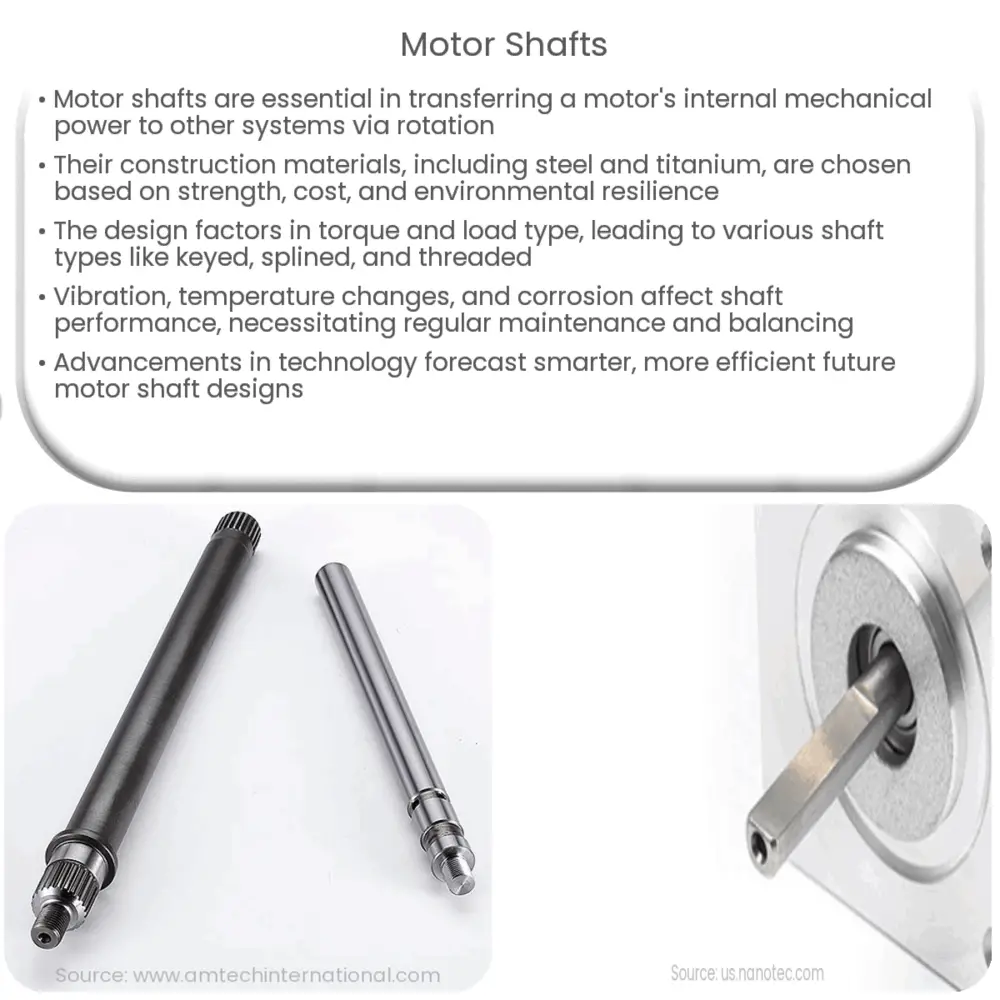Explore the essentials of motor shafts, their types, construction, and performance factors. Discover future trends and the importance of maintenance.

Understanding Motor Shafts
A motor shaft is a critical component of any mechanical drive system, especially in the context of electric motors. Understanding its properties, the materials used in its construction, and its importance in the overall functioning of a motor is key to grasping the intricate details of mechanical and electrical engineering.
The Basics of Motor Shafts
A motor shaft is a rod-like structure, typically cylindrical, extending from the motor’s interior. The shaft’s primary function is to transfer the motor’s mechanical power – generated within the motor – to other devices or systems. This power transfer is accomplished by rotating the shaft, which, in turn, can drive mechanisms like gears, belts, or propellers attached to it.
Material Consideration for Motor Shafts
The construction materials for motor shafts are selected based on the strength and durability requirements of the specific application. Commonly used materials include various grades of steel, stainless steel, and in some instances, more specialized materials like titanium. It’s crucial to strike a balance between strength, cost, and the ability to withstand the environmental conditions in which the motor will operate.
Design and Manufacturing
Motor shafts are designed considering a number of factors. The most important among these are diameter and length, both of which are typically related to the amount of torque the motor generates and the type of load it needs to drive. Manufacturing processes for motor shafts can involve several methods, from traditional machining and grinding to more modern methods such as CNC machining.
Types of Motor Shafts
- Keyed Shafts: These are the most common types, and they include a slot called a keyway that aligns and locks an element into position.
- Splined Shafts: These have multiple keyways around their circumference for greater torque transfer.
- Tapered Shafts: These have a diameter that decreases along their length, often used in specific applications like in motor vehicles.
- Threaded Shafts: These have threads along their length or ends and are typically used in applications requiring adjustment or precision positioning.
Motor shafts are a pivotal part of any electric motor system, playing a key role in translating the motor’s internal power into useful mechanical work. The right selection of shaft type, material, and design can significantly impact the motor’s performance and longevity.
Factors Affecting Motor Shaft Performance
There are several factors that can impact the performance of a motor shaft. Vibration, for example, is a common issue that can lead to shaft misalignment or even breakage if not controlled. Other factors include temperature changes, which can cause material expansion and contraction, and the presence of corrosive substances that could deteriorate the shaft material.
Motor Shaft Maintenance and Repair
Maintenance is key in ensuring the longevity and efficiency of motor shafts. Regular inspections for wear, corrosion, and vibration can help detect potential issues before they cause serious damage. The method of repair largely depends on the type and extent of damage, but may include techniques such as machining, grinding, or even complete replacement.
Motor Shaft Balancing
One of the critical aspects of a motor shaft’s operation is its balance. Balancing is the process of distributing mass evenly around the shaft’s axis of rotation. This reduces vibration and enhances the motor’s operational efficiency and lifespan. Balancing may be achieved through various techniques such as drilling, milling, or adding weights to the shaft.
Future Trends in Motor Shaft Design
With advancements in technology and materials science, we can expect motor shaft designs to continue evolving. The integration of smart technology can potentially allow real-time monitoring of shaft conditions and predictive maintenance. Furthermore, the use of new materials and manufacturing processes may lead to lighter, stronger, and more efficient motor shafts in the future.
Conclusion
In conclusion, the motor shaft plays a crucial role in the functioning of electric motors, transmitting the motor’s mechanical power to other devices or systems. Understanding its design, construction materials, types, and factors affecting its performance is essential for anyone involved in the field of mechanical and electrical engineering. Regular maintenance and proper balancing are key to ensuring the longevity and efficiency of motor shafts. As technology continues to advance, we can expect exciting developments in motor shaft design that will lead to improved performance and operational efficiency.

